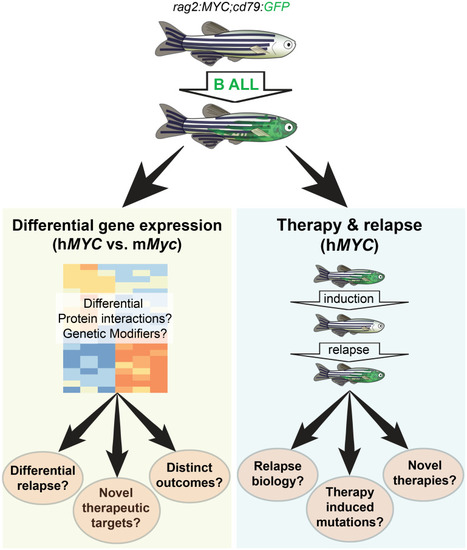- Title
-
MYC'xing it up: zebrafish B ALL models provide insight into MYC-driven disease and relapse
- Authors
- da Bandeira, D.S., Clements, W.K.
- Source
- Full text @ Oncotarget
|
Recent studies have demonstrated that transgenic zebrafish carrying the |

